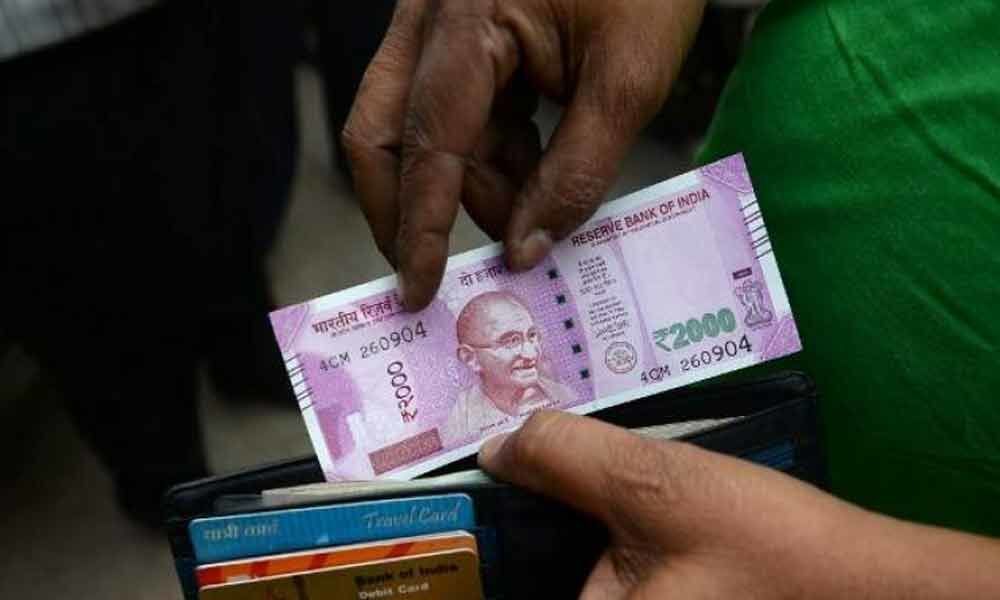Live
- Nizamabad MP Dharmapuri Arvind and Jagtial MLA Dr. Sanjay Kumar Meet CM Revanth Reddy
- Hyderabad CP CV Anand Issues Stern Warning to Bouncers
- MP Laxman Criticizes Police Conduct, Calls for Support for Victims' Families
- Fire Breaks Out in Kachiguda-Chennai Egmore Express, Passengers Evacuated Safely
- CM Revanth Reddy Condemns Attacks on Film Personalities' Homes, Calls for Strict Action
- Victory Venkatesh and Nandamuri Balakrishna to Set Screens on Fire with Unstoppable Season 4
- Over 71.81 crore Ayushman Bharat Health Account numbers generated: Centre
- In special gesture, Kuwait's Prime Minister sees-off PM Modi at airport after conclusion of historic visit
- Veer crowned PGTI Ranking champion, Shaurya wins emerging player honour
- Sr National Badminton: Unseeded Rounak Chauhan, Adarshini Shri reach singles semis
Just In
PSUs must maximise 'time value of money' to boost growth


In an ideal scenario, a lender would wish to maximise the value of the loan recovered, and yet achieve this in quick time.
As news regarding recapitalisation of Public Sector Banks (PSBs) and the need to improve credit availability come to the fore, one crucial issue that is assuming increasing importance is the need to maximise the "time value of money" of loans by ensuring faster resolution of credit issues.
An effective resolution of non-performing assets (NPA) requires the balancing of two aspects of loan recovery value maximisation, i.e., a higher recovery amount and a quicker recovery process. In an ideal scenario, a lender would wish to maximise the value of the loan recovered, and yet achieve this in quick time.
However, in reality, the two factors usually work in opposite directions. A focus purely on maximising the actual loan recovery amount can lead to situations whereby the length of time taken to resolve the NPA can lead to a loss in value through "time value of money", a loss since the loan capital stuck in an NPA is unavailable for productive use. On the contrary, a rapid resolution without paying heed to maximising loan recovery amounts leads to the lender not maximising the actual loan recovered.
A balance between the needs of maximising loan recovery values and minimising loss of time value of money is required. To elaborate this trade-off better, one needs to weigh the pros and cons of recovering 60 per cent of an NPA in one year as opposed to recovering 80 per cent of the NPA in six years from now. The capital recovered can be used through lending it in the economy, thereby boosting credit, investment, growth and job creation.
Further attention on the time value of money aspect is essential in an Indian context. The Financial Stability Report (FSR) by the Reserve Bank of India (RBI) points out that the gross NPA ratio was 9.3 per cent for all banks as of March 2019 and is expected to 9 per cent by the end of the fiscal year 2019-2020. The crucial question the FSR raises is as to what steps need to be taken to equip the banking system to head towards a quicker resolution of NPAs.
Bank recapitalisations are useful to shore up bank balance sheets, but both PSUs and the government need to look into what mechanisms can assist in creating transparent processes that allow for expedited resolution of NPAs with a focus on maximising the time value of money.
A focus on a transparent process to expedite resolution of bank loans is important because in essence as mentioned above maximising time value of money will require a trade-off in terms of reducing the recovery of the notional loan amount. Merely waiting to maximise loan recovery values without paying heed to the time value of money leads to situations whereby the impaired capital structure of the business eventually leads to value destruction of the assets and the brand of the concerned company.
The Jet Airways bankruptcy saga is an example of the trade-off between maximisation of loan recovery value and the importance of maximising time value of money. Enabling and empowering PSUs to move swiftly towards loan resolutions with an eye on ensuring that an expedited resolution process can help them recover partial amounts of capital lent to the business can significantly help NPA resolutions in India. Loan recovery when the business such as Jet Airways is a running entity with operations in full swing is relatively easier than when the company has stopped operating its assets and therefore has diminished the brand value.
The focus on maximising time value of money will be even more crucial for companies such as Jet Airways in the consumer-facing space without many fixed assets. Loan recovery from a company with a high fixed asset component will tend to yield higher returns when operations stop than for low fixed-asset businesses. That said, maximising time value of money will be crucial for all.
As PSUs eye recapitalisation, a renewed focus on maximising the time value of money through a flexible and transparent approach will do well to help increase credit flow. Banks will need to be empowered to truly push for credit growth through loan resolutions that do maximise the actual loan recovery balancing all aspects as opposed to theoretical loan values that may be recovered in the future.
(The views expressed in this article are personal and that of the author Taponeel Mukherjee. The author heads Development Tracks, an infrastructure advisory firm.)

© 2024 Hyderabad Media House Limited/The Hans India. All rights reserved. Powered by hocalwire.com






